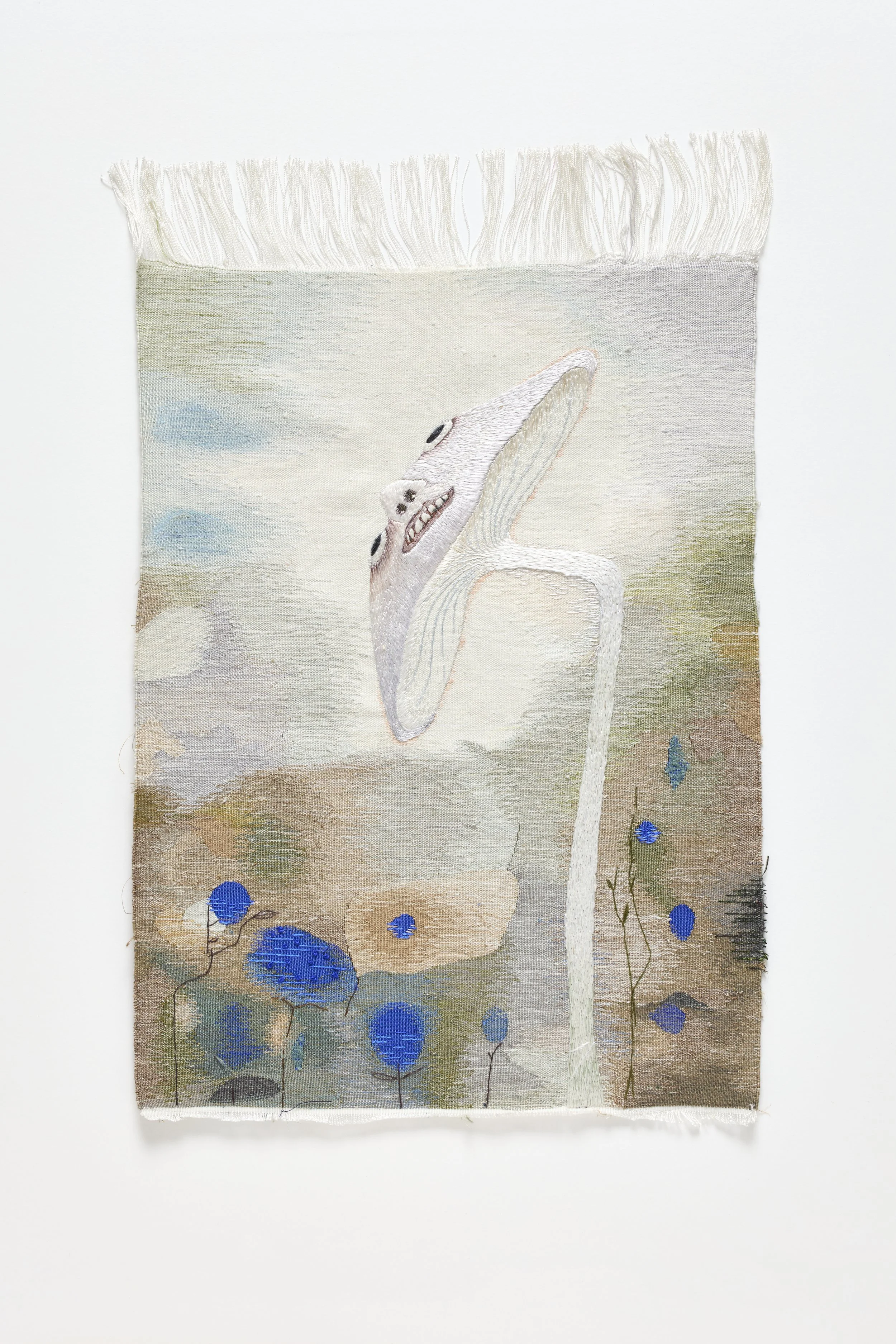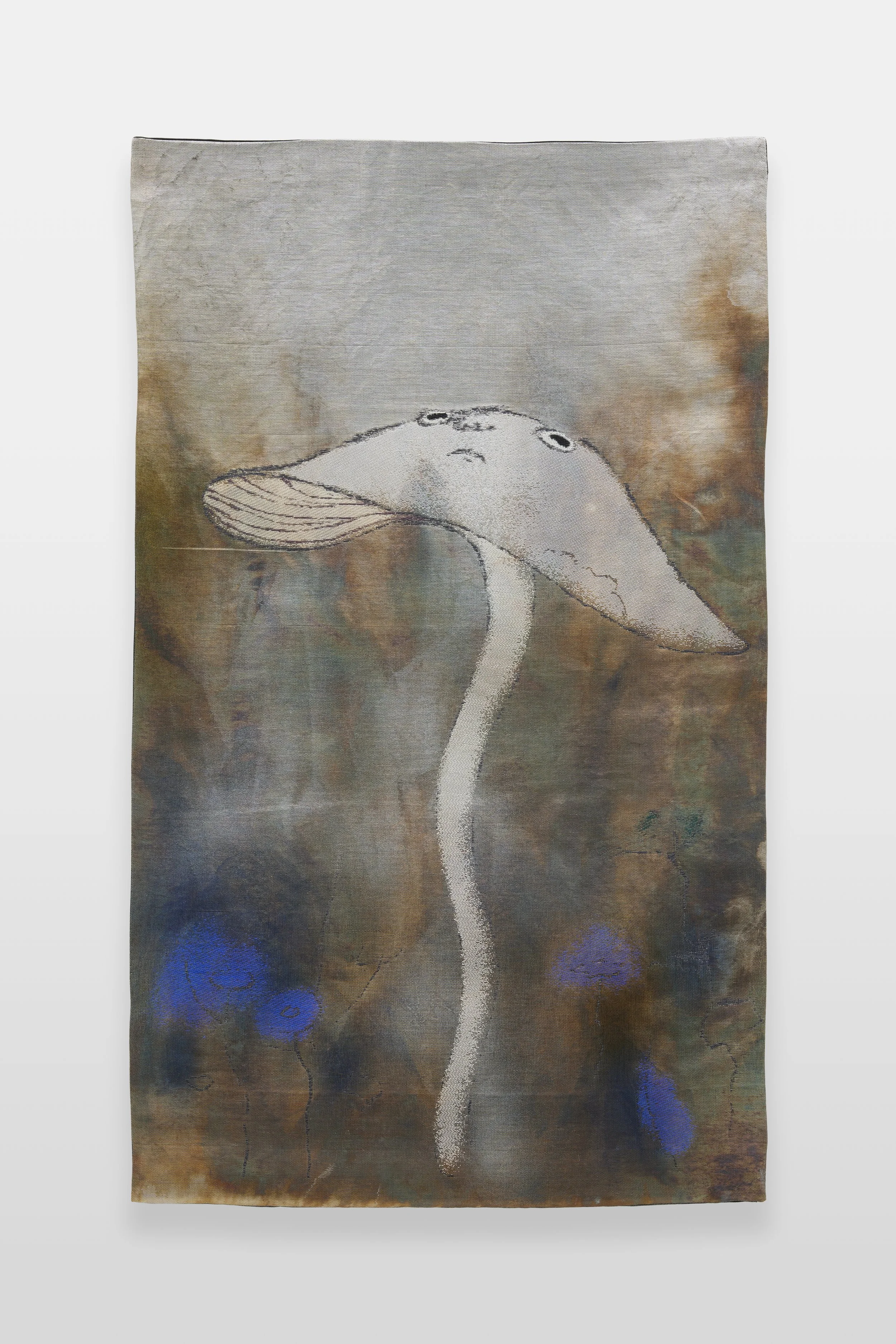Latest from the Ateliers
2024 Calico Wallpaper Dinner
We were honored to contribute our hand-dyed kitchen linens to the launch of Calico Wallpaper’s Alchemy & Enchantment, two transformative wallpaper collections that celebrate nature’s vibrant hues. Created in collaboration with artist and educator Janene Ping from the HV School, these collections feature silk dyed with local plants, yielding stunning, nature-inspired shades. The intricate artistry behind the dyes beautifully reflects the natural world, with each piece in the collection serving as a unique tribute to the environment's rich color palette.
2024 L&G Studio Lamp
In 2024, we had the honor of collaborating with Dylan Davis and Jean Lee of the Brooklyn-based design studio Ladies & Gentlemen Studio to create a lighting prototype for the Upstate Cardinal House using handwoven Kurimayu raw silk from Kyotango, Japan. Kurimayu, or chestnut cocoon, is produced by wild silkworms that feed exclusively on chestnut leaves. The raw silk from these silkworms is rare and highly valued.
The silk is woven loosely and spiraled around a wooden frame, allowing light to shine through in a soft, gradated glow. The shifting shadows evoke the gentle movement of a traditional Japanese lantern, creating a serene and atmospheric effect.
2023 Sanya Kantarovsky Art Piece
We were honored to collaborate with the incredibly talented New York-based artist Sanya Kantarovsky for his solo exhibition at Taka Ishii Gallery in Kyoto, April 2023. Sanya’s watercolor painting was transformed into an exquisite Obi-width tapestry, woven on a loom that has been used for centuries to create kimono and obi fabrics. The piece was handwoven using the traditional Tsuzure-ori technique, where each thread is plucked by hand with the weaver’s nails. The intricate mushroom design was rendered using Japanese embroidery techniques, while all silk yarns were dyed with natural materials such as moss, leaves, flowers, mud, and fungi. Over time, the piece will change color, embodying the true wabi-sabi essence of Japanese craftsmanship.
This Nishijin Brocade piece incorporates Hikihaku, an ancient technique where lacquer, silver, gold, and platinum foils are combined with natural minerals and plants, then applied to washi paper. The paper is cut into fine threads and woven into the textile. Hikihaku is a rare material historically used in Nishijin textiles, including obi fabrics and gold brocades.
The vintage metal foils used here are over 50 years old, each processed individually to create unique patterns. These oxidized foils are now incredibly rare, carrying with them the passage of time. The aging process has rendered the original techniques so delicate that they can no longer be replicated by most artisans. As the number of craftsmen capable of working with such aged materials dwindles, the artistry behind this piece becomes even more invaluable.
The Hikihaku elements in this tapestry feature silver, platinum, and lapis lazuli, making it a rare fusion of contemporary artistry and centuries-old Japanese craftsmanship.
Sanya Kantarovsky “Growth” in Nishjin Brocade.
Kitchen Linen collection
These kitchen linens are handcrafted by artisans from Amami-Oshima, a small island in southern Japan known for its pristine nature. It is home to Oshima Tsumugi, a revered textile with a 1,300-year history, often called “The Queen of Kimono.” Once used to make the finest kimonos offered as tribute to emperors, Oshima Tsumugi remains one of Japan's most prestigious fabrics. Renowned for its durability, the natural colors of Oshima Tsumugi evolve beautifully over time, passed down through generations.
The same artisans who dye Oshima Tsumugi use traditional methods to hand-dye these kitchen linens. They gather plants, brew them to create natural dyes, and repeatedly wash the textiles in ocean mud to set the colors, achieving the perfect hue.
Kitchen Collection 2022
Home Linen Collection
Our Home Collection, including pillowcases and bed throws, is woven in the Kyotango region, a place blessed by both sea and mountains. The region's high humidity creates the ideal environment for producing and processing raw silk and is the birthplace of Tango Chirimen, a renowned kimono fabric that has long been integral to Kyoto's trade history. The unique treatment of raw silk, including the removal of sericin, results in a fabric that is wrinkle-resistant, soft, lightweight, and highly comfortable—a material traditionally used for centuries to make luxurious kimonos.
Inspired by Kyotango's natural beauty, our home linens are crafted from a blend of 100% silk yarns, Japanese hemp, and yak wool, handwoven to evoke the region's geological layers. The yarns are dyed with locally sourced plants, including chestnut skins, persimmons, and shell ginger from Amami and the mountains of Kyoto, establishing a deep connection to the rich, natural environment that surrounds the artisans.
2020 V&A Museum
Some of the obis crafted by our artisans are featured in the V&A's kimono exhibition, with seven pieces now part of the museum's permanent collection.
Here is a video produced by the V&A, in collaboration with our client Kondaya in Kyoto, showcasing the intricate process of making Hikihaku Obi.






















